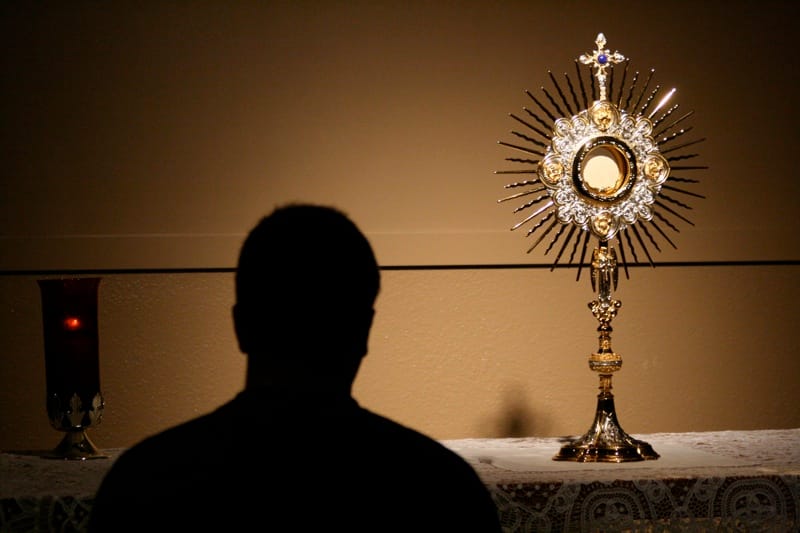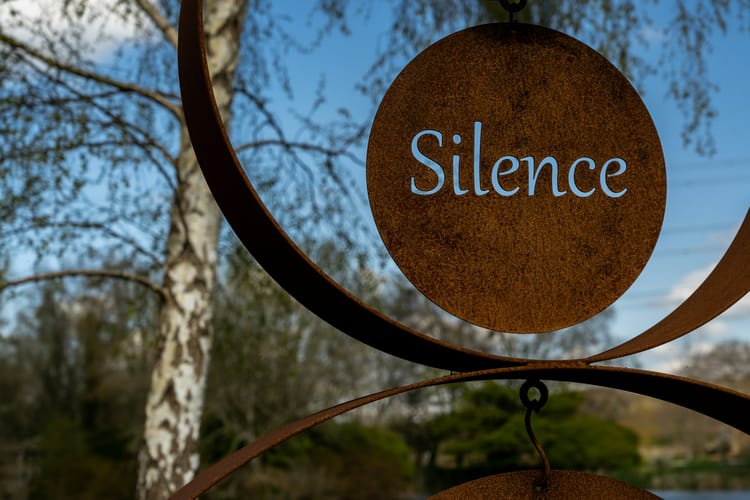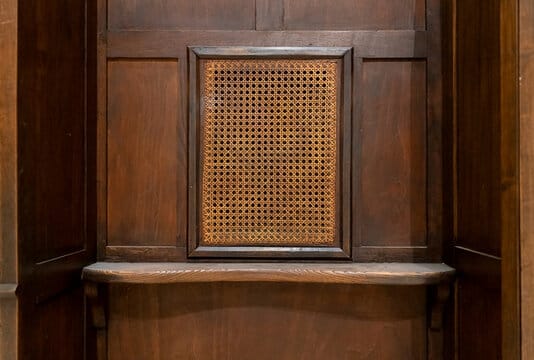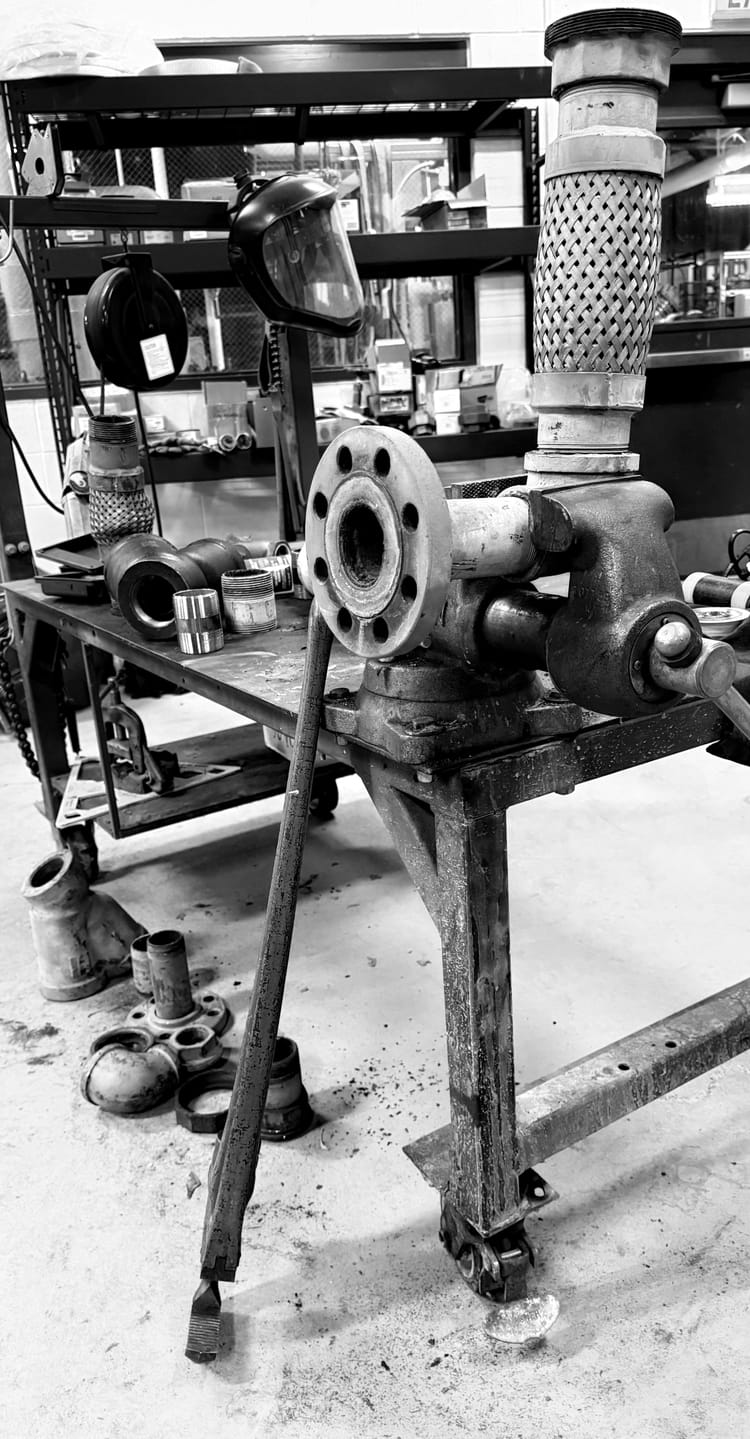What Do You Do in Adoration?

Do you ever sit in Adoration and wonder, "Am I doing this right? Is this okay?"
In almost every parish I’ve been to, and in most of the books I’ve read (even the really good ones), people talk about the power of Adoration—but rarely how to actually do it.
My wife and I recently visited a parish for an “Intro to Adoration” night. We brought our oldest kids and notebooks, ready to pick up some tips for deepening our time with the Blessed Sacrament.
It was especially helpful for me. I had never experienced group Adoration before, and as I listened to others describe how they spend that time, I realized: we need more of this.
Adoration is hard to describe. It’s deeply personal, and people can be hesitant to talk about it—not because they’re hiding something, but because they fear being judged. I once saw someone get sternly corrected for praying a silent Rosary in the chapel. Since then, I’ve been more cautious about sharing my own experience.
I was fortunate to attend a parish that offered Perpetual Adoration, and I currently volunteer for a weekly Holy Hour at a different parish. I’ve spent many long and late hours with Christ and have developed a rhythm to guide that sacred time.
But it wasn’t always that way. In the beginning, the advice I found felt vague and unhelpful. I looked to the saints and got the impression that the best way to do Adoration was late at night, alone, with no “crutches”—no Rosary, no spiritual reading, no music, no aids at all. My first few visits felt more like a standoff in a Clint Eastwood film than a holy, peaceful encounter. Still, I stuck with it, following the quiet wisdom of saints like Mother Teresa and John Paul the Great.
Eventually, it clicked. Adoration transformed from a source of confusion into a weekly point of peace and restoration. That change didn’t come all at once, but over time. I now consider Adoration essential to my spiritual life, and I advocate for it strongly.
So, what do people actually do during Adoration? Let’s take a look at a few real-life examples.
A Few Ways Real People Spend Their Time in Adoration
1. Begin on Your Knees
One Catholic dad shared that he always starts Adoration on his knees in silence. He thanks the Lord for the grace of simply being there and quietly offers praise. He reminds himself that the God present in the fragile Host is the Creator of the universe, who became man, was broken, and died for him personally.
After this silent moment of awe, he moves into conversation:
“I talk with Him about my week—the good, the ugly, the graces I noticed, and the people I know who need His help. Sometimes it's a dialogue, especially if I'm facing something hard. But more often, it’s me talking and Him simply being with me. His presence is the answer.”
After 10 or 15 minutes, he turns to structured prayer, often using The Ignatian Adventure or Journey with Jesus, and spends time journaling or reflecting. He ends his hour with simple, heartfelt thanks.
2. Reading the Gospels in His Presence
Another Adorer keeps his practice simple. He brings a Bible, opens the Gospels, and reads slowly with Jesus before him in the Blessed Sacrament.
“There is nothing like reading Christ’s words in His presence. It’s become essential for me.”
He keeps a journal nearby and writes down what stands out. Often, one verse or image draws him into prayer. This quiet, focused time is a form of Lectio Divina, and it has become the core of his Holy Hour.
3. The Rosary and Rest
Some begin their hour with the Rosary—not as a checklist, but as a way to settle the mind and enter prayer. One woman shared:
“The Rosary is my entry point. It gives me something to hold onto when my mind is all over the place. But I don’t force myself to finish it. Sometimes I only get through a decade before the Lord invites me into silence.”
For her, silence isn’t a failure. It’s a response to grace. She described it as resting with God, trusting He is working even when nothing is said.
4. A Litany of Names
Another man brings a handwritten list of people who’ve asked for prayer or come to mind unexpectedly. He places the list before the Lord and prays through it slowly.
“I tell Jesus about each one. Sometimes I don’t even know what to say—I just say their names and trust He knows the need.”
Afterward, he often just sits in quiet, letting go of expectations. He sees it as bringing people to Christ, much like the friends who lowered the paralytic through the roof.
When God Feels Silent
I’ll offer one more experience—this time for those who have already spent some time in prayer and Adoration.
There was a season when God was silent for 58 minutes of every Holy Hour. The first few times it happened, I’ll admit, I nearly left early. I never did, but it was frustrating and confusing.
This kind of dryness is normal, both in and out of the chapel. God will sometimes withdraw the warm feelings we had in prayer to help us mature. Like marriage, the foundation of a lasting relationship with Him isn’t built on feelings—it’s built on presence and commitment.
The Quiet Power of Being There
Adoration is like compound interest. Each visit is a deposit. The balance grows over time.
I’ve walked into Adoration in despair and walked out with peace. I’ve experienced moments of clarity, deep consolation, even tears. But more often than not, the grace is slow and hidden. The change happens below the surface.
Time spent with the Blessed Sacrament will change you. But it is the kind of change that is deep. And deep change is a process, not an event.
Start Where You Are
Next to Mass and daily prayer, Adoration is the most essential tool in my spiritual toolbox. If possible, aim for weekly Adoration, even if it’s just 15 minutes. And if that’s not realistic yet, try to offer at least one hour a month.
There is nothing like sitting in silence with Jesus. Every minute in His presence is a step closer to the person you're called to be.





Member discussion